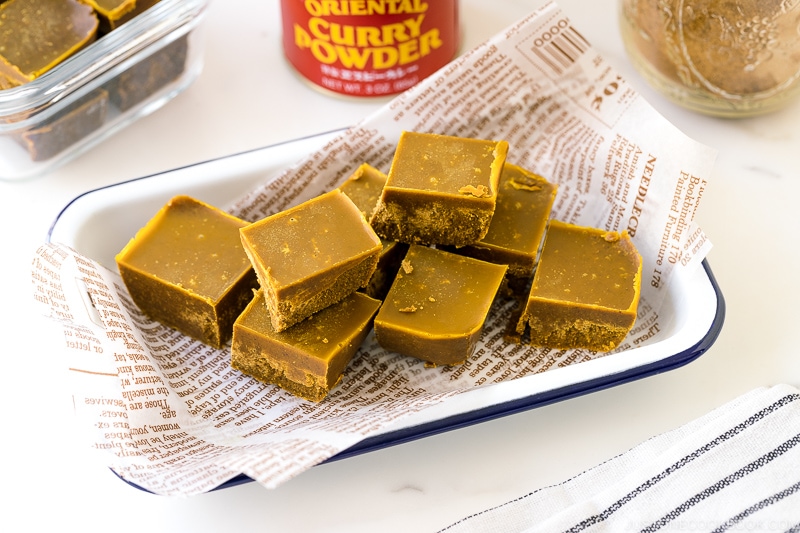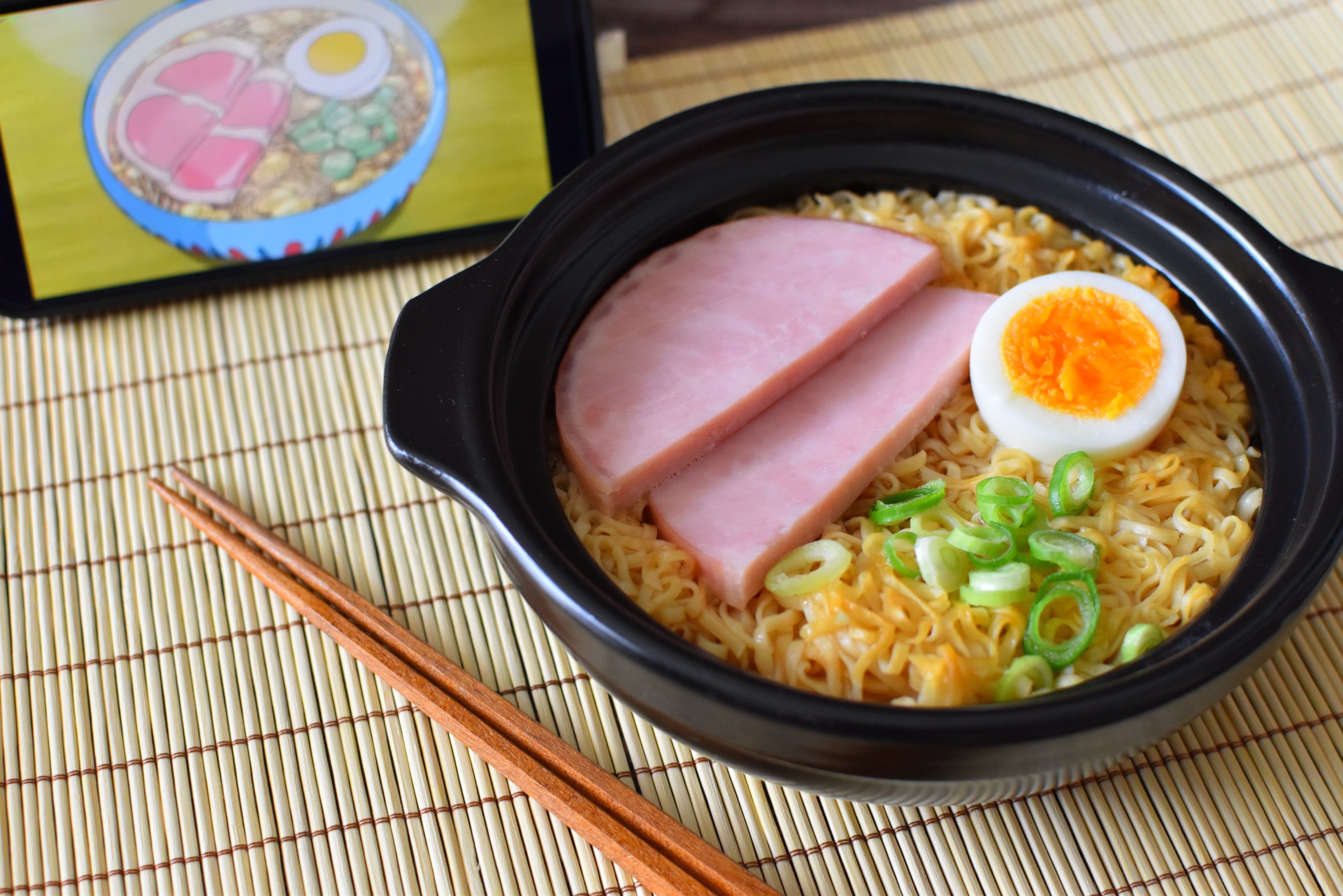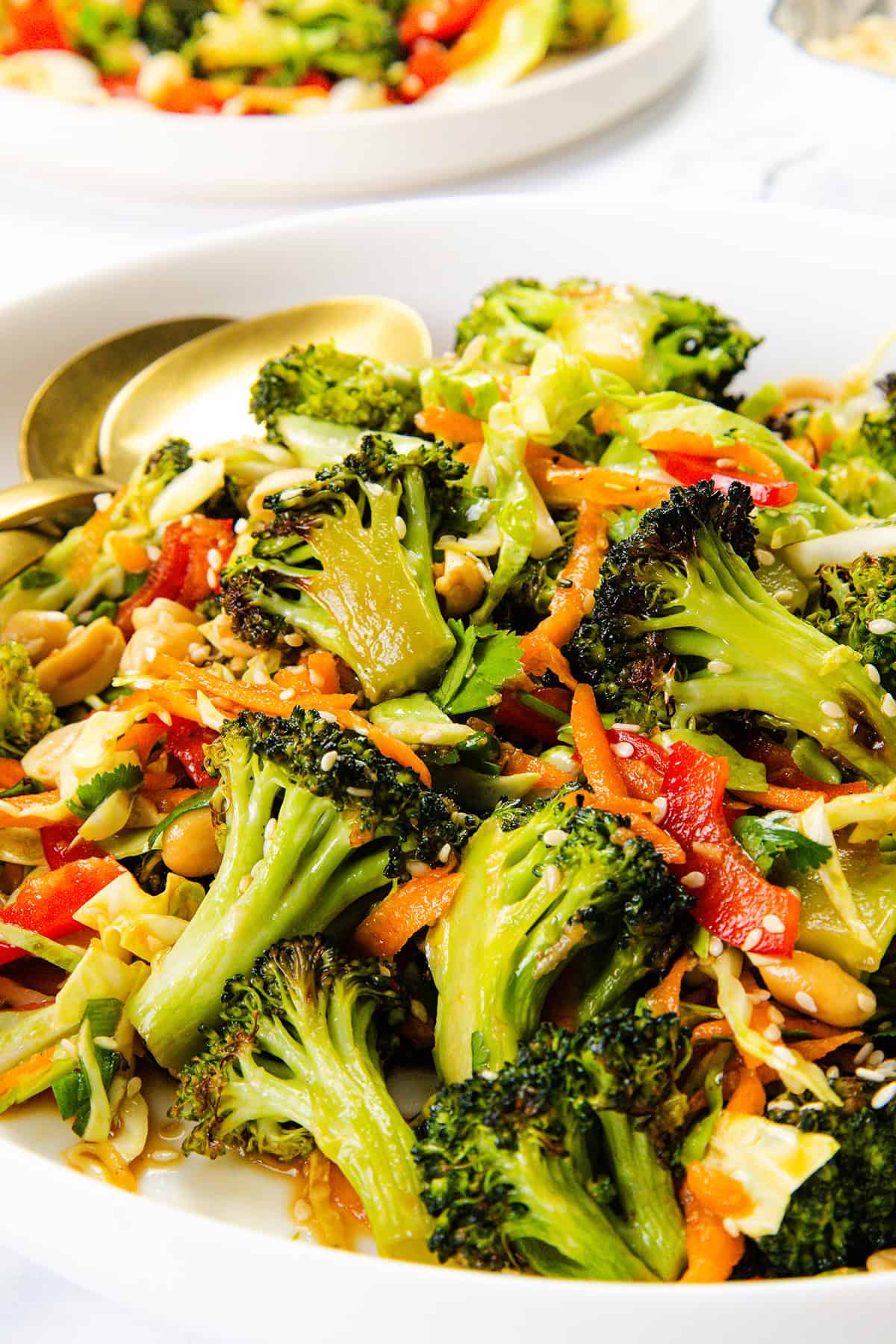Shibazuke are Japanese semi-salty and tangy purple pickles. This traditional tsukemono (pickled dish) originated in Kyoto and is a staple of the city’s cuisine. It’s typically made with cucumbers, eggplant, and red shiso leaves then left to ferment giving it a vibrant color and a refreshing vinegary taste. It’s a great side dish to rice, grilled dishes, and bento meals.

What is Shibazuke?
Shibazuke (柴漬け, pronounced shee-bah-zoo-keh) is a type of Japanese pickled vegetable and a specialty of Kyoto cuisine. It is one of the three main types of Japanese pickles from Kyoto along with Suguki (radish pickle – すぐき) and Senmaizuke (thinly sliced turnip pickle – 千枚漬け). It’s made from a mixture of chopped cucumbers and eggplant fermented with red perilla leaves (shiso). This bright purple pickle is typically made in summer when the vegetables and red shiso are abundant. It has a bold tangy flavor developed through the lactic acid fermentation, which sets it apart from more mild pickles like takuan (yellow pickled daikon) or asazuke (lightly pickled vegetables).

Ingredients Needed for Shibazuke
Shibazuke is made with just a few simple ingredients:
Cucumber
Japanese cucumber (kyūri) is a key ingredient in shibazuke. It has a crisp texture and mild, refreshing flavor. Unlike Western cucumbers, Japanese cucumbers are slender, have thin, tender skin, and have fewer seeds, so they’re ideal for pickling. They easily absorb the salty tangy brine in shibazuke and add a crunchy contrast to the softer eggplant.
Eggplant
Eggplant (nasu) is a traditional and essential ingredient in shibazuke. It becomes a soft and tender texture after pickling and soaks up the pickle flavor. Japanese eggplants are typically used because they’re slender, with thin skin and a delicate bitterness that mellows during fermentation.
Salt
salt is crucial in making shibazuke because these pickles are made salt pickling. It also works as a preservative and enhances the flavour. Typically 3% of the total weight of the main ingredients (e.g. eggplant and cucumber) is used. This amount is enough to draw out moisture from the vegetables, create the brine needed for fermentation, and stops unwanted bacteria while still allowing beneficial microbes to develop. The salt also helps maintain the crisp texture of the vegetables and balances the sour, tangy flavor. It’s important to use the right ratio because too little salt can cause spoilage but too much can overpower the taste.
Red shiso (perilla) leaves
Red shiso (‘aka-jiso’ in Japanese) is the key ingredient to creating the signature purple color of the pickles and for adding flavor. This variety of shiso is abundant in summer and is largely produced in the Ohara region of Kyoto because of its optimum climate. For this recipe we need ‘momishiso’ (揉み紫蘇), which are red shiso leaves that have been salted and gently massaged to release their natural juices and vivid colour. This process removes the bitterness and brings out the deep red-purple pigment needed for making things like umeboshi (pickled plums) or shibazuke. You can purchase ready made momishiso in season in Japan but this, and even fresh red shiso, can be hard to find outside of Japan. If you can’t access this, dried red shiso flakes (yukari) are a convenient alternative. They just need to be rehydrated in water before use and also, a small amount of umezu or beet juice can provide color, but the flavor won’t be quite the same.
Optional ingredients
Myoga (Japanese ginger) or fresh ginger can also be added to enhance the flavor and acidity of the pickles.

To make authentic shibazuke at home, you’ll need just a few basic tools:
- A pickling container or clean glass jar – essential for storing and fermenting the vegetables.
- A pickle press or a set of weights – to properly press the ingredeints and draw out moisture. A small plate with a clean stone or jar filled with water works well if you don’t have a traditional press.
- A sharp knife and cutting board – needed for slicing the vegetables so they pickle evenly.
- A Ziplock bag – needed for salting and combining the ingredients before transferring them to your jar.
Step by Step Instructions for Shibazuke
1. Slice and Salt the Vegetables
Wash and dry your vegetables. Cut the cucumbers and eggplant into bite-sized pieces making sure to keep the sizes uniform for even pickling. Place the sliced vegetables into a clean and large ziplock bag. Weigh it then sprinkle 3% salt of the amount. Toss well and remove as much air as you can and zip the bag. Place 1.5 times of weight on it and leave it in room temperature for about 3-4 days.

2. Prepare the Shiso
If using fresh red shiso leaves, rinse and pat them dry. Rub the leaves with salt until they release a deep purple color, then squeeze out the excess liquid. Repeat this process twice. Place it in clean jar and add a little bit of vinegar. The vinegar will turn into a pretty red colour. If using dried red shiso flakes (yukari), soak in a little water for a few minutes, then drain and squeeze gently. This step gives the shibazuke its iconic color and distinctive aroma.
3. Combine and Press
In another clean zip lock bag, place the salted vegetables (all the liquid discarded and excess moisture squeezed out) and momishiso (prepared shiso leaves). Remove as much air as you can and ziplock the bag. Place the weight on top of the bag again and refrigerate overnight.

4. Pickling Time and Storage
Shibazuke should be stored in an airtight container in the refrigerator, where it will keep for about 2 to 3 weeks. For longer storage, make sure the pickles are fully submerged in their brine to prevent spoilage. The flavor continues to develop over time, but for the best taste and texture, consume within a month.
Making shibazuke at home is simple, but a few key tips will help you achieve the best flavor and texture:
- Salting amounts and timing: use about 3% salt of the total weight of the vegetables. This helps draw out moisture, kickstart fermentation, and preserve the pickles. Using the right ratio is key – too little may cause spoilage, while too much can overpower the taste.
- For the best texture, choose firm and fresh vegetables in season.
- If you are making Momishiso from scratch, rubbing the red shiso leaves with salt and squeezing them will remove natural bitterness and bring out their bright color and aroma.
- Fermentation time for best flavor: Let your shibazuke ferment for at least 3 days for a light pickle, or 5–7 days for a deeper tanginess. Taste daily and adjust according to your preference. Fermenting for longer results in more sourness and stronger umami.
How to Serve Shibazuke
Shibazuke is typically served as a side dish or garnish alongside steamed rice, onigiri (rice balls), or in bento boxes. Its vibrant purple color and tangy, salty taste also make it a refreshing palate cleanser for rich or greasy foods like grilled fish, Japanese fried chicken (chicken katsu) or tempura. You can also enjoy it as-is, finely chopped and sprinkled over tofu or rice, or mixed into ochazuke (tea over rice) for an added punch of flavor.
Shibazuke Variations and Creative Twists
Shibazuke can be adapted by using different vegetables like daikon or green beans in place of or alongside eggplant. Adding ginger, yuzu peel, or chili pepper brings extra layers of flavor. You can also try mixing chopped shibazuke into cream cheese for a savory spread, or use it as a colorful topping for sushi rolls and rice bowls.
FAQ
Q : Is shibazuke fermented?
A : Yes, shibazuke is a fermented traditional Japanese pickle. It’s made by salting vegetables (usually eggplant and cucumber) along with red shiso leaves, then allowing them to ferment naturally over time. This fermentation process creates the signature tangy and sour taste of shibazuke and helps preserve the vegetables. However, some modern versions use vinegar for quicker pickling, which mimics the sour taste without full fermentation.
Make authentic Kyoto-style shibazuke pickles with cucumber, eggplant, and red shiso full of delicious tangy flavors.
Prep Time 10 minutes
pickling time 7 days
Total Time 7 days
Servings: 1 jar
- ▢ 2 cucumbers
- ▢ 3 eggplants
- ▢ 3 myoga
- ▢ 1 piece ginger
- ▢ 26 g salt *1
- ▢ 35 g momishiso *2
Wash and dry cucumbers, eggplants, myoga and ginger.
Cut the cucumber and eggplants into bite-sized pieces making sure to keep the sizes uniform for even pickling.
Cut the ginger into matchstick shapes. Cut the myoga in half then slice it thinly.
Weigh all the vegetables to calculate the amount of salt required. *3
Place the prepared vegetables and salt into a clean and large ziplock bag and toss well.
Remove as much air as you can and zip the bag. Place 1.5 times of weight on it and leave it at room temperature for about 3-4 days.
After 3-4 days, drain and discard the pickling liquid and squeeze out the excess moisture out of the vegetables. Weigh the pickled veggies to calculate the amount of momishiso required. *4
Place the salted vegetables into another clean zip lock bag with momishiso.
Toss them around to spread the momishiso evenly.
Remove as much air as you can and seal the bag.
Place the weight on top of the bag again and refrigerate overnight.
Place shibazuke in a clean air tight container and store in the refrigerator. It will keep in the fridge for 2-3 weeks.
*1 You need to weigh the total amount of your chopped veggies. Then calculate 3% of that amount. That will be the amount of salt required.
*2 Weigh the veggies again after pickling, then calculate 10% of that amount. That is the amount of red shiso (momishiso) you will need.
*3 My cut vegetables weighed 870g. 870 x 0.03 = 26.1, so I used 26g of salt for pickling.
*4 My pickled vegetables weighed 344g. I decided to use 10% momishiso, 344 x 01 = 34.4 so I used 35g of momishiso.
Calories: 421kcal · Carbohydrates: 95g · Protein: 17g · Fat: 3g · Saturated Fat: 1g · Polyunsaturated Fat: 1g · Monounsaturated Fat: 0.2g · Sodium: 10117mg · Potassium: 3994mg · Fiber: 46g · Sugar: 57g · Vitamin A: 748IU · Vitamin C: 50mg · Calcium: 215mg · Iron: 5mg
Course: condiments
Cuisine: Japanese
I want to see it! Tag @chopstickchronicles on social media!
The site and our mobile application may contain links to affiliate websites. We receive a small affiliate commission for any purchase made by you on the affiliate website using such links. Read our disclosure policy.











 English (US) ·
English (US) ·